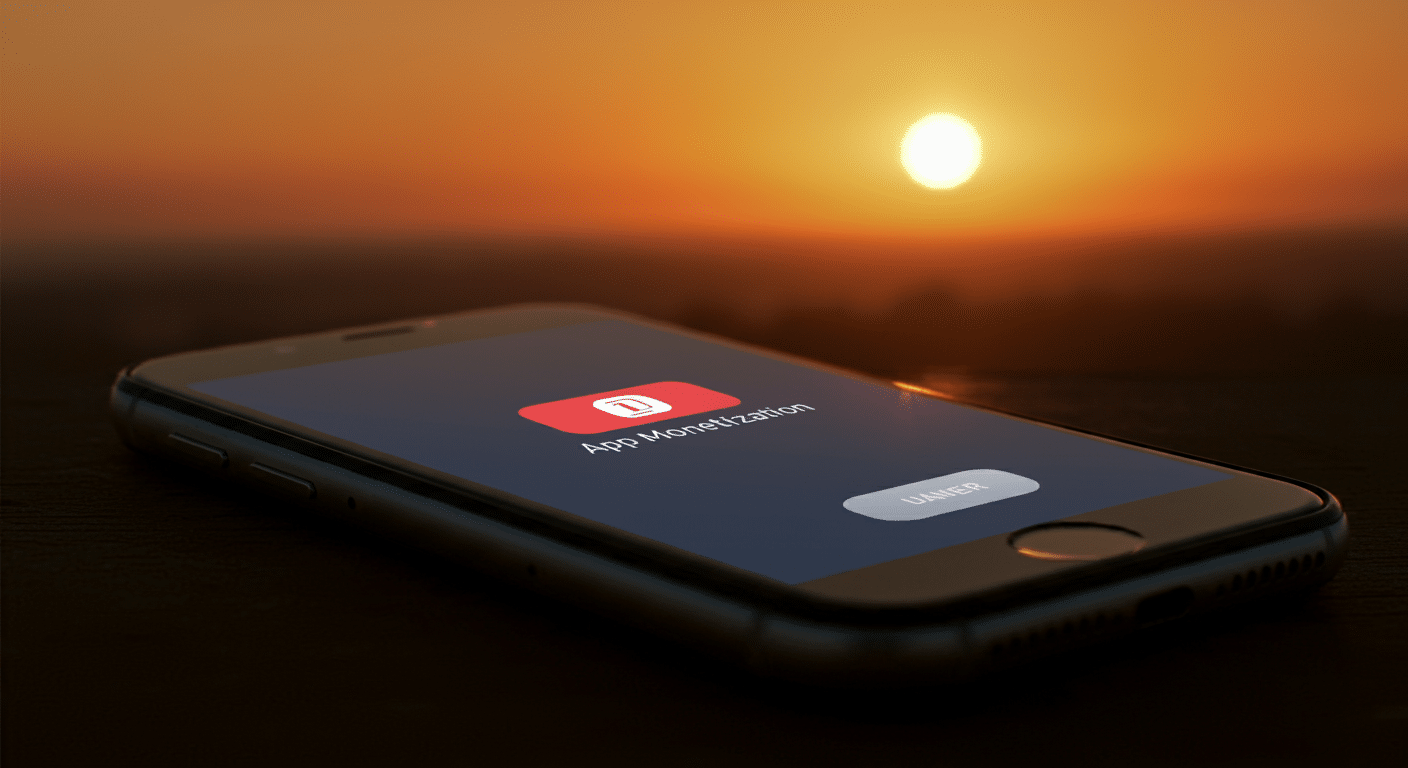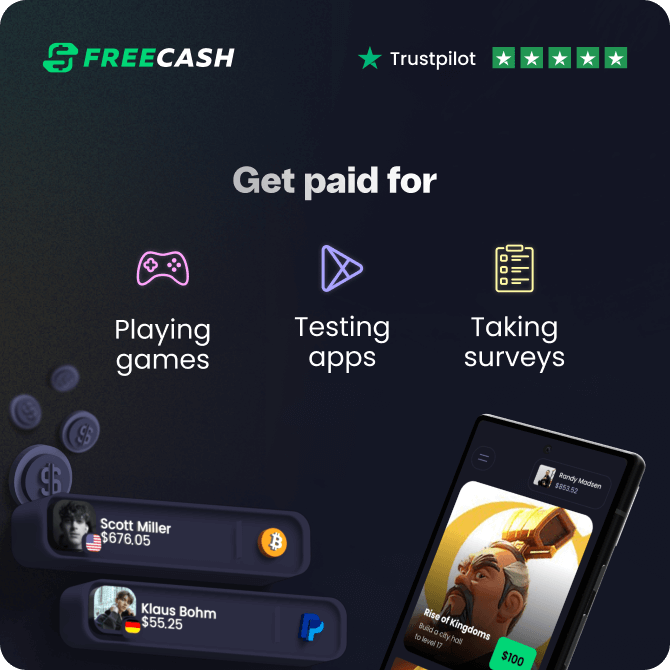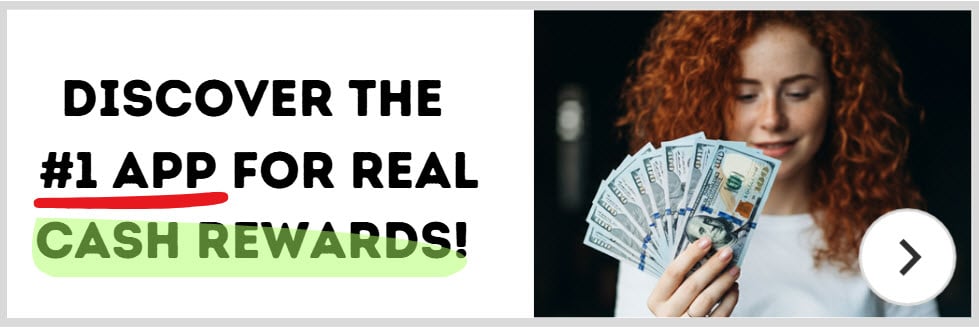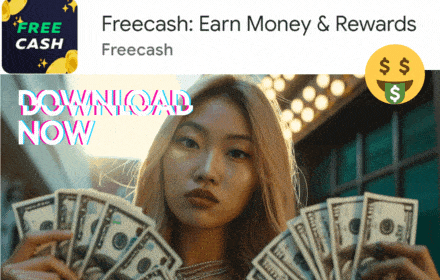
Have you ever wondered how app developers make money from those little icons we tap on our screens daily?
With billions of smartphones in use worldwide and apps for everything from gaming to meditation, there’s a huge potential for revenue.
In fact, mobile app revenues are projected to reach $935 billion by 2023.
Creating and maintaining an app requires a lot of effort and resources, so developers need ways to turn that hard work into income.
These money-making methods are called “monetization strategies.”
If you’re new to this, no worries – this guide will walk you through the most common ways developers cash in on their creations.
1. In-App Advertising
Let’s face it – ads are everywhere, and apps are no different.
In-app advertising is one of the most popular ways for app developers to make money, especially for free apps.
Imagine it just like the ads you see on websites, but popping up in the app instead.
Here are a few types of in-app ads you’ve probably seen (or been annoyed by):
- Banner Ads: These small ads appear at the top or bottom of your screen, usually without getting in your way too much. They’re easy to ignore but still get the job done.
- Interstitial Ads: These full-screen ads pop up at the most inconvenient times – like right when you’re about to start the next level in a game. They’re hard to miss, but they can drive you nuts if they show up too often.
- Video Ads: Ever watch a short video to earn a reward in a game? That’s a video ad. Whether it’s extra lives or in-game currency, users are more willing to watch if there’s something in it for them.
- Rewarded Ads: We don’t mind these ads as much because they give us something we want. Watch an ad and get a bonus—everybody wins!
Why This Works: Ads are effective because they allow users to enjoy the app for free while giving developers a steady income stream from advertisers willing to pay to grab your attention.
Downside: Too many ads can kill the vibe.
Users might get frustrated and hit that uninstall button if they’re too frequent or intrusive.
Developers have to strike a balance between making money and keeping users happy.
2. In-App Purchases
Another major money-maker is in-app purchases, where users can buy things like extra lives, power-ups, or exclusive features.
It’s absolutely massive in gaming apps, but even productivity or editing tools offer extra perks for a price.
You get the basic version for free, but if you want to level up your experience – that’s when you need to break out the wallet.
There are two main types of in-app purchases:
- Consumable Purchases: These are items you can buy repeatedly, like coins or energy in a game. Once they’re used, they’re gone, and you might find yourself reaching for that “buy more” button. It’s like buying candy – sweet, satisfying, but quickly gone.
- Non-Consumable Purchases: These are one-time purchases that stay with you, like unlocking a premium feature or removing ads forever. Once you pay, you own it—no strings attached.
Why This Works: It’s a classic strategy – reel users in with a free app and then offer awesome extras they can buy.
If the app is fun, engaging, or makes life easier, users are happy to spend a bit of cash to enhance the experience.

This reward platform is going viral! Cash out via PayPal, Visa, Gift Cards, and in-game currencies - Click here to find out how to generate an extra $10+ per day!
Downside: Sometimes, users feel like they’re being nickeled and dimed, especially if it feels impossible to make progress without spending money.
If developers aren’t careful, this can quickly frustrate users and make them look for a less demanding app.
3. Freemium Model
The freemium model combines “free” with “premium.”
Users get the essential app for free, but they can pay to access more advanced features.
This is a common approach for productivity and subscription-based apps like note-taking or fitness apps.
For example, an app might let you store a limited number of files or access basic workout plans for free.
If you love the app’s offerings, you can upgrade to get unlimited storage, exclusive workouts, or personalized coaching.
Why This Works: It’s like a free trial with benefits. Users get a taste of the app before deciding if they want to pay for the premium experience. It’s low-risk for users and can lead to a loyal paying audience.
Downside: If the free version doesn’t offer enough, users might get frustrated and give up before ever considering the premium option. The key is to strike a balance that keeps users engaged while enticing them to upgrade.
4. Subscription Model
Subscriptions are taking over!
Instead of paying once, users pay on a recurring basis—weekly, monthly, or annually—to continue enjoying the app’s features.
This is popular with apps offering continuous content, like music, video streaming, fitness, or education platforms.
Think about apps like Spotify or Netflix.
For a regular fee, you get unlimited music or movies, which keeps users hooked and developers happy while providing a steady income.
Why This Works: Subscriptions mean predictable revenue for developers. It also encourages them to keep improving the app to keep subscribers happy and paying.
Downside: Some users are hesitant to commit to ongoing payments, especially if they aren’t sure they’ll keep using the app long-term.
5. Paid Apps
While not as common as free apps, some developers still go the old-school route and charge a one-time fee for users to download the app.
This is often the case for niche apps that offer specialized tools without ads or in-app purchases.
Why This Works: Developers get paid upfront, which means no need to worry about ads or additional monetization strategies. Users also feel like they own something of value.
Downside: Getting people to pay for an app without trying it first is tough. In a world of free apps, convincing users to pay before they’ve even tried it can mean fewer downloads.
6. Sponsorship and Partnerships
Some apps bring in money through sponsorships or partnerships with other brands.
A fitness app, for example, might partner with a sports brand to promote their products within the app, maybe even offering exclusive discounts.
Why This Works: Sponsorships fund developers to keep their apps running smoothly while brands advertise directly to a targeted audience.
The downside is that these deals can be complex to come by, especially for smaller apps. Brands want a significant user base before they invest.
7. Affiliate Marketing
Affiliate marketing allows developers to promote products or services within their apps and earn commissions for every purchase made through their affiliate links.
It’s like being a middleman – the developer earns a cut if users click through and buy.
For example, a shopping app might link to products on an e-commerce site.
The app developer gets a percentage of the sale every time a user buys through that link.
Why This Works: Affiliate links are a form of passive income that doesn’t require much upfront investment. It can be a nice bonus if the app already has a loyal audience.
Downside: This only works well if the app has enough users to click the links and make purchases. It’s not always a big money-maker unless you have a large user base.
8. Selling Data and Analytics
Some apps collect user data (with permission) and sell insights to third parties, such as marketers or research companies.
This data could include information about user behavior, preferences, or demographics.
Why This Works: Data is gold in today’s digital world. Businesses are willing to pay for insights that help them understand their audience, giving developers another income stream.
Downside: Privacy concerns are huge. Developers must be transparent and follow strict regulations, like GDPR, to avoid backlash from users and regulators.
Final Thoughts
App monetization is all about finding the sweet spot – making money while keeping users happy.
The right strategy depends on the app’s purpose, the audience, and what users are willing to pay for.
While some users are okay with a few ads, others prefer paying for a smooth, uninterrupted experience.
For developers, experimenting with different strategies is critical to keeping the app sustainable in a fiercely competitive market.
Now that you know how apps make money, you might view your favorite apps differently.
Each ad, in-app purchase, and subscription reflects a strategy to keep the app successful and beneficial for its creators.


